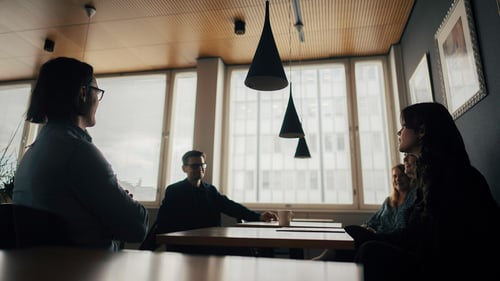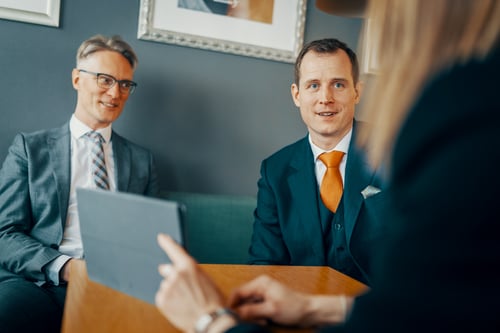EU copyright legislation consists of two regulations and 11 directives that harmonise the essential rights of authors, producers, broadcasters and performers. The most recent directive, known as the "EU Digital Single Market (DSM) Directive",¹ strives to modernise rules in the digital environment. The deadline for transposing it into national law expired on 7 June 2021.
Background
The EU DSM Directive requires several amendments to existing copyright law, and it affects everyone involved in the digital copyright business in any role, whether as an artist, author, publisher or user. Harmonisation has been quite demanding, not only because of different national institutes and laws, but also because of a lack of common taxonomy. Several EU countries, including Finland, are late in implementing it.
The preparatory discussions with stakeholders in Finland have now been completed and the window for commenting on the first draft of the copyright law amendments closed in October 2021. The government proposal for the amendments to the copyright law will follow shortly.
This article discusses one particular issue that must be solved prior to the publication of the Finnish government's proposal for amendments to the copyright law – namely, the scope of permission that online content sharing service providers (OCSSPs) are required to obtain in order to avoid liability for infringing content. The role and liability of OCSSPs is one of the matters that is addressed under the EU DSM Directive and the harmonised rules use a concept of "communication to the public", which has been harmonised to some extent but may nevertheless become problematic.
This is not the only issue, or even the largest unresolved problem, but it is nonetheless important because it involves the underlying systematisation of the very basics of copyright.
Authorisation for communication of content to public
Article 17 of the EU DSM Directive requires that an OCSSP obtain authorisation from the rights holder to communicate the content to the public. While on its face this seems straightforward, it may cause problems since it is silent on the right to make reproductions.
The concept of "communication to the public" is used in the EU DSM Directive in a manner that covers the use of the work by the end user and thus implies that no separate authorisation is needed to make temporary copies that are technically necessary to make the work accessible. However, in many member states, such reproductions are not allowed, unless otherwise permitted.
The EU Information Society Directive² – as well as national law – contains an exception for technically necessary reproductions for lawful use, but it is applicable only when and to the extent that the reproduction lacks independent economic significance. In reality, playing online content can be considered economically significant. If the work could be made accessible through any kind of communication without the right to make any kinds of copies, end users could also play and see the video or other content without express authorisation if there was a sufficiently broad exception concerning private use. In Finland as well in several other EU member states, the private use exception does not cover the reproduction of music, movies, computer programs or electronic files in a database.
Finland, like several other jurisdictions, divides economic rights of copyright in three parts:
- making of copies;
- making the work accessible (in a broad sense, including communication, licensing and any distribution); and
- making modifications.
These three aspects of economic rights are often treated separately. However, the concept of "communication to the public" as it is used in the article 17 of the EU DSM Directive, does not fit into any pre-existing systematisation.
Article 9 of the Berne Convention states that "[a]ny sound or visual recording shall be considered as a reproduction for the purposes of this Convention". Further, the Agreement on Trade-Related Aspects of Intellectual Property Rights limits the possibilities for enacting exceptions and limitations. According to article 13:
Members shall confine limitations or exceptions to exclusive rights to certain special cases which do not conflict with a normal exploitation of the work and do not unreasonably prejudice the legitimate interests of the right holder.
(This is known as the "three-step test".)
Under national laws where the right to reproduce the work is different from any form of providing access to the work, the implied reproduction right challenges the systematisation and may become problematic.
Finnish approach under EU DSM Directive
The Finnish proposal for the new Copyright Act continues with its existing systematisation and goes a bit further than the EU DSM Directive in that it requires authorisation to be obtained by OCSSPs for reproduction of the work and communication of the work to the public. Since the playing of a video or showing a work on a computer screen creates a temporary copy of the work, and since such temporary copies fall within the exclusive rights of the copyright owner, the Finnish approach requires authorisation to provide a video ("making available") as well as authorisation to play it ("making a reproduction").
The reasoning behind this approach is understandable. The law requires authorisations that are needed in light of international agreements, but OCSSPs will not be pleased to find that the authorisation they need from copyright holders is different and broader than in the EU DSM Directive.
The purpose of the EU DSM Directive is to harmonise the rules. Furthermore, such language may seem unnecessary from a business perspective as OCSSPs prefer not to grant rights to make independent and new copies of content and do not see the need to obtain permission that may authorise such actions. Nothing under Finnish law demands that rights to make permanent copies would be granted to users, but it nevertheless causes concerns.
The concept of "communication to the public" has been harmonised to a large extent since the Internet has made it easier to gain access to works. Harmonisation is desirable, but while specifying a concept that relates to distribution, communication and making accessible separately from the internal systematisation and separately from the reproduction right, the EU DSM Directive has combined two separate sub-rights under one concept that previously related only to communication.
The law in Finland states that the copyright holder has the exclusive right to decide on reproducing the work and about all means of making the work accessible to the public in its original form and as derivations and alterations. The three distinct sub-rights included in this exclusive right are as follows:
- the right to make reproductions;
- the right to make available, which is understood broadly. This includes the rights:
- to communicate to the public, including the right to make it available at a time and place chosen by the user;
- to publicly perform for an audience that is present;
- to sell, rent or loan or otherwise distribute a copy of the work; and
- to display the work to the public using technical means; and
- the right to make derivative works and alterations
This systematisation will continue to apply and define the acts that require authorisation from the copyright owner. Whenever assessing a particular use of a work, Finnish practitioners, judges and legislators often identify several acts that are relevant in light of economic rights, and they do not need to be included in one concept. The right to make available does not include the right to make reproductions, permanent or temporary, and OCSSPs will need to obtain authorisation for copies and for communication to the public.
Comment
The European Union does not have the luxury or even the opportunity to institute a coherent copyright system but instead it provides case law on certain harmonised aspects of copyright. Harmonisation is desirable but unfortunately the internal expansion of any concept to capture all or several different kinds of relevant acts is not helpful from the perspective of systematisation. Using harmonised and expanded concepts in the copyright law amendment forces the legislature to ask whether we end up neglecting something fundamental if we leave the matter of copies out of copyright authorisation.
The new law requires OCSSPs to obtain express authorisation in an understandable manner from the point of view of an author, who typically does not understand the systematisation or the precise content of the concepts of copyright. It will be interesting to see how the legislature solves this problem and what kind of permissions will be required to use content – ranging from downloading the content on a platform to the use of it for the end user's amusement. It seems likely, however, that copies will continue to be the cornerstone of copyright, even if this might create complications for multinational companies. Such companies may be frustrated by the lack of harmony in the harmonisation process.
For further information on this topic please contact Elisa Huusko at Berggren Oy by telephone (+358 10 227 2000) or email (elisa.huusko@berggren.fi).
Endnotes
(1) Directive (EU) 2019/790 on copyright and related rights in the Digital Single Market and amending Directives 96/9/EC and 2001/29/EC).
(2) Directive 2001/29/EC on the harmonisation of certain aspects of copyright and related rights in the information society.





